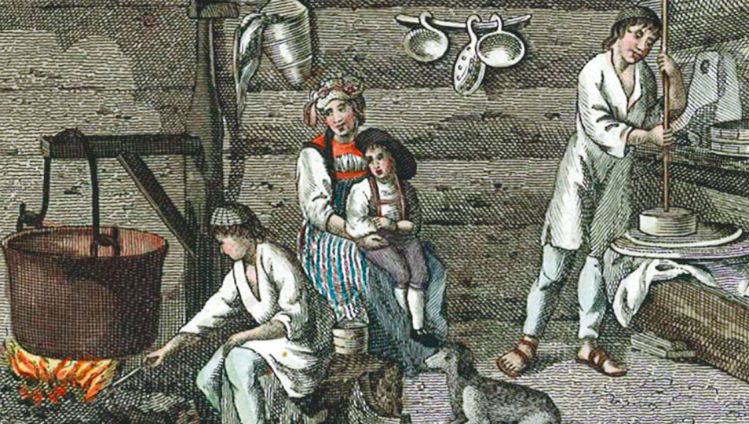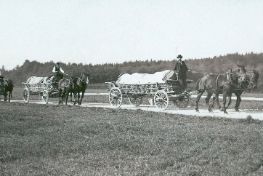
The History of Cheese From Switzerland
The origins of cheese date back to the Stone Age, when hunters discovered whitish, gelatinous lumps in the stomachs of young grazing animals that had drunk their mother's milk shortly before being captured. This milk, which had fermented in the stomachs of the animals, was the first 'cheese experience' of our ancestors and was already considered a true delicacy thousands of years ago.
Archaeological findings from the Neolithic period have shown that people were already keeping livestock in Switzerland. It is therefore highly probable that those who used animal milk were looking for a way to preserve this rapidly perishable good.
For centuries, only a certain type of cottage cheese was produced from curdled milk. The hard-cheese tradition was introduced to the Alpine regions by the Romans, who occupied Switzerland at the time.
The first medieval source that mentions cheesemaking dates back to 1115 and comes from the Pays-d’Enhaut in the former county of Gruyères. The Charter of the city of Burgdorf from the year 1273 also refers to the cheesemaking in the Emme Valley.
Up until the early Middle Ages, people only lived in parts of alpine valleys where cereal crops would grow. Dairy farming was predominant in the Alps and Pre-Alps; wherever milk was produced, it had to be preserved. This meant turning the milk into butter, Ziger (whey cheese), quark and cheese.
As transportation routes developed, people were able to settle in more remote alpine valleys. As a result, cheese became the new staple food, replacing traditional dishes (usually cabbage or gruel).

In the early days of the Confederation, cheese was as common a means of payment as money, used to pay craftsmen and even to pay parish dues. Cheese was also used for bartering outside the Confederation. Alpine dairymen carried their wheels over the alpine passes to Italy to exchange them for spices, wine and rice. Somewhat later, the herdsmen began to work in collaboration with cheesemongers, who provided them with storage space, capital, sales skills and a customer network. As late as the 18th century, cheesemongers brought linen, fustian, coffee and tobacco to alpine huts and farms in exchange for cheese wheels.
At that time, the same basic hard cheese recipe was used throughout Switzerland. Cheeses varied from one dairy to another, mainly due to differences in the size of the mountain pastures and the way the cheeses were treated during the maturing process. At that time, certain basic methods of making hard cheese - still typical today - were already emerging, such as Etivaz, Sbrinz, Gruyère and Emmentaler. Hard cheese was particularly popular because of its long shelf life.

At the time, people still believed that transportable cheese could only be produced in the Alps. But Philipp Emanuel von Fellenberg begged to differ: in 1805, he set up an experimental cheese dairy on his Hofwil estate and soon proved that quality cheese could be produced in the lowlands as well. In 1815, Lord Rudolf Emanuel von Effinger built a cheese dairy in Kiesen near Thun, which was the first in the Emme Valley to be operated as a cooperative. Although the Swiss were initially sceptical about Emmentaler from the lowland cheese dairies, cheese production gradually moved to the valleys and more specifically to the Plateau. From 1832 onwards, the number of cheese dairies in the Fribourg region increased. The alpine cheese dairy quickly lost its supremacy, and more than one herdsman became a cheesemaker in one of the many village cheese dairies. Others bought low-lying pastureland and became resident mountain farmers. Still others went abroad, mainly to Eastern Europe and North America, where they built cheese dairies and produced mainly Emmental cheese.

